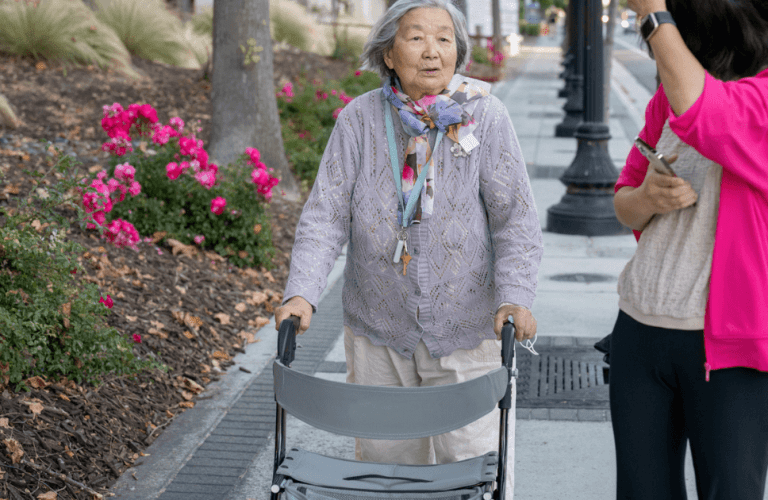Caregiver Burnout: Signs a Family Caregiver Has Reached Their Limits

If you’re a caregiver and have not had a break for a long time or are trying to do more than you’re able – either physically or emotionally – you may be at risk for caregiver burnout. Often described as physical, emotional and mental exhaustion, many family members don’t realize the consequences until they are faced with the task.
One of the most compassionate acts families can offer is caring for a loved one. However, the caregiver’s health may be sacrificed if there isn’t enough support to attend medical appointments, exercise, eat right or interact socially. Caregivers may also feel isolated, undervalued and experience a decrease in their quality of life.
Signs of caregiver burnout
Recognizing the signs of caregiver burnout can allow for early intervention. The following are a few of the more common symptoms:
- Feeling overwhelmed or constantly worried
- Feeling tired and run down
- Experiencing chronic fatigue or changes in sleep patterns
- Unintentional gain or loss of weight
- Becoming easily irritated, angry or having trouble concentrating
- Experiencing a loss of interest in activities previously enjoyed
- Feeling sad, depressed or hopeless
- Developing headaches, stomachaches or frequent illnesses
- Feeling that caregiving has taken over life
- Substance abuse
- A weakened immune system
- High blood pressure and heart disease
Tips to prevent caregiver burnout
While it’s important to recognize and treat caregiver burnout, it’s better to prevent it from happening if possible.
Families should discuss how they can help the primary caregiver avoid exhaustion. The following are a few strategies to consider:
- Set realistic goals: Be honest about what can be accomplished in a day or week.
- Seek out support: This can include support from family, friends or caregiver groups.
- Use respite care services: Take regular breaks by arranging temporary care for a loved one.
- Focus on what you’re able to provide: Give yourself a break. There is no perfect caregiver. You’re doing the best you can at any given time.
- Set personal health goals: Establish a good sleep routine, find time for physical activity and eat a healthy diet.
- Connect with others: Make an effort to maintain relationships and share feelings.
- Seek professional help when needed: If you experience depression or anxiety, consider seeking professional counseling or talking to a therapist.
Download our complimentary Family Decision Toolkit.
Caregiver burnout: How an assisted living community can help
For many caregivers and their families, the needs of their loved ones can exceed what they can provide at home, leading to caregiver burnout. An assisted living community can be a great solution. Here’s why:
Professional care: Assisted living communities offer professional care for older adults, including medication management, assistance with daily activities and ensuring needs are adequately met.
Social engagement: A community’s social environment can be challenging to replicate at home. Residents can participate in group activities, form new friendships and engage in social events they enjoy.
Safety and security: Assisted living facilities are designed with the safety and security of residents in mind, featuring safe living spaces, emergency call systems and staff available 24/7 if help is needed.
Respite for caregivers: Knowing their loved one is in a safe, supportive and caring environment provides significant relief to caregivers. It allows them to let go of the day-to-day responsibilities and focus on their well-being.
Improved quality of life for both: Residents of assisted living communities often experience an improved quality of life through professional care, socialization and independence. Simultaneously, caregivers can find stability in their lives, pursue their interests and enjoy spending time with their loved one.
Discovering balance: When care at home is no longer practical or possible, the support of an assisted living community can provide a balanced path that supports everyone’s well-being. Not only as a solution to the challenges of caregiver burnout but also to enhance the quality of life for older adults – communities can be a valuable option for families navigating the complexities of long-term care.
Discover life at a Northbridge community
If you’re considering senior living for yourself or a family member, we hope you’ll visit one of our communities. You’ll find a maintenance-free, activity-filled and engaging lifestyle to help support your wellness goals.
You’ll also discover many benefits in a Northbridge Senior Living community, including our Signature Program S.T.A.R. Club (Sharp Thinking, Active Residents) – which offers our residents several activities to participate in with others, including:
- Daily exercise group
- Walking club
- Tai Chi & yoga
- Nutritional classes
- Library and book club
- Museum outings
- Artists in residence program
- Multi-generational music
- Genealogy Generations
We’re here to answer any of your questions. Please contact us if we can provide further information or if you would like to schedule a personalized tour. Download our complimentary Family Decision Toolkit.
